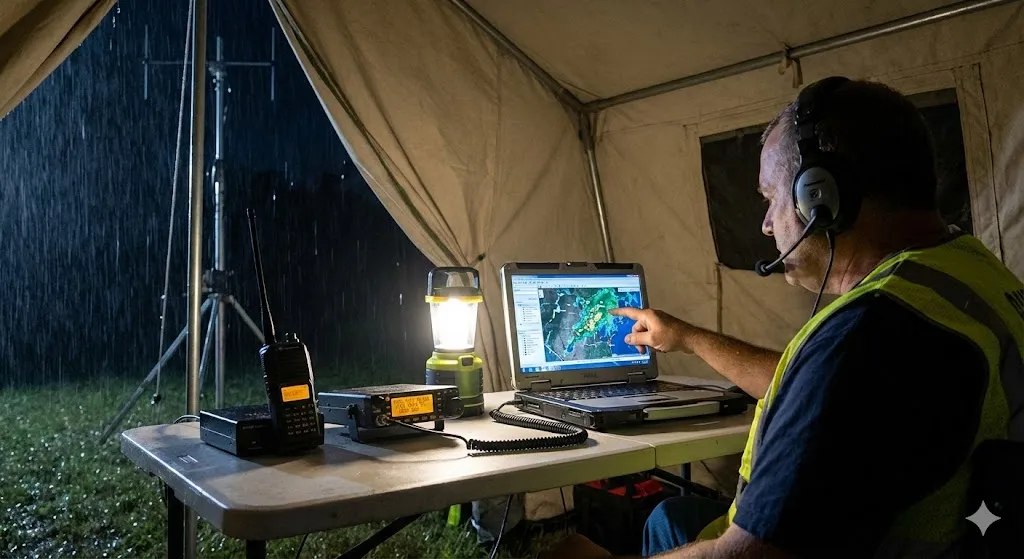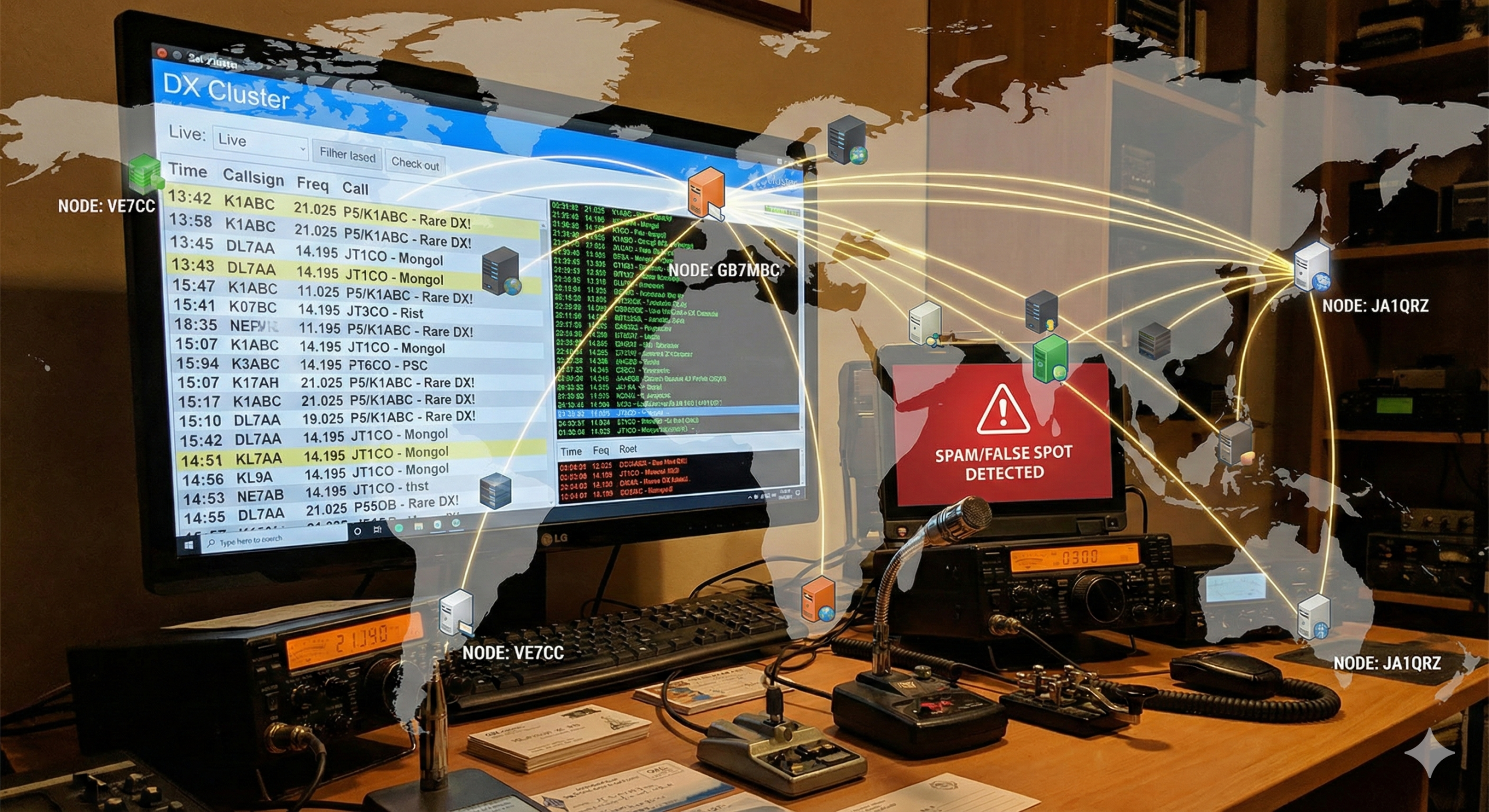A BEGINNERS GUIDE TO CW QSO PROCEDURES
The following is an example of a typical “rubber stamp” QSO. This format is generally used by CW (Morse)
Amateur Radio operators as an opening gambit but can constitute an entire and complete QSO for beginners
who wish to start CW without worrying about what to say next!!!
1 Assuming the TX is tuned and the aerial is matched to the TX you must search the band you wish to use
for a clear frequency (QRG).
2. When you have found a clear frequency proceed as follows.
3. Adjust your TX to a suitable power output. Do this quickly!! Now you can transmit the following
signal…QRL? QRL? QRL? This signal means “is the frequency in use?” It is important that you do this, there
may be a station on the frequency that you cannot hear but his contact may become audible when it is his
turn to transmit, you should therefore listen for a short while to ensure the frequency really is clear of any
other traffic.
4. If there is no reply then proceed to transmit the following signal.. CQ CQ CQ de G3XXX G3XXX CQ CQ CQ
de G3XXX G3XXX CQ CQ CQ de G3XXX G3XXX AR SK
5. AR SK means end of message and invites a caller (any caller) to transmit to you. A reply to your CQ may
not be exactly on your TX frequency! You need to use the Rx RIT (receiver incremental tune control) to
listen either side of your TX frequency just in case (Yaesu call the RIT control the CLARIFIER). Do not adjust
the main tuning dial on your TX/RX to search or tune in an off frequency replying station … always use the
RIT.
6. A reply will most likely be in the following format G3XXX G3XXX de W4YY W4YY W4YYKN KN is the signal
for a nominated station to reply …in this case you. Some stations simply call with their own call sign and if
you are not sure he is actually calling you, send QRZ QRZ DE G3XXX K
7. When you are sure that you are being called, your reply is…SN (all received) W4YY W4YY de G3XXX
G3XXX bk (dahditditditdahdidah) MNI TNX FOR UR CALL OM bk UR RST IS 589 589 bk MY QTH IS LONDON
LONDON ES (and) MY NAME IS FRED FRED bk HW CPY ? W4YY de G3XXX ARKN
Information such as name and QTH is sent twice simply because most overseas operators will not be familiar
with English names and place names and of course vice versa. Information about rigs and aerials is common
knowledge world wide.
8. He will reply with a call sign exchange as above but may not send the call sign twice (you and he already
know them so there is no need to waste time on repeats). His text will follow very closely to yours viz; QTH
NAME . He may send …HR WX RAIN (or sunny etc) TEMP 26C (some USA stations send the temperature in
Fahrenheit so be prepared!
9. His hand over back to you will be in the following format…Call sign exchange then HOPE ALL OK? BTU
(back to you) G3XXX de W4YY KN (or ARKN)
10. You will notice that the hand over procedures in CW are quite formal. There are some variations that
you will quickly pick up but at first it is best to keep to the “rubber-stamp” format. The most usual quick
hand over is …OK/ BKN This does away with the laborious sending of call signs at every over and is some
times used by “slick operators”!!!!!
11. When you have passed over the basics information of NAME, QTH, WX, you may wish to pass the
transmission back to the caller and he may send information about his station. You can do likewise on the
return and then you may wish to close the QSO. You need to do this politely and the following format is
usual….MNY TNX FER FB QSO OM BK HR QRU (I have no more traffic) BK HPE CUAGN BK 73 ES FB DX GL
ES GE (or GM depending on time of day . If your contact is far west or far east of you, you can send
GD….good day) ARSK de G3XXX ARSK
12. His reply will be similar and you can close the QSO completely by sending BK AR SK (sometimes
followed by TU and two dits. This means: Thank You and pip pip).
13. There are many abbreviations — use by Radio Amateurs. Most are derivations of commercial signals and
are used to save time and defeat ambiguity which can occur when in contact with over seas station who are
not familiar with English. Many of these abbreviations are known as Q codes e.g. QSB; fading, QRM; man
made interference, QRN; natural interference (static), QRU; I have no more traffic etc. They are extremely
useful and are used in almost every QSO.
14. Lists of Q codes are to be found in the usual radio text books.
15. Other abbreviations are arbitrary and are simply shortened versions of the fully spelled word e.g. tmrw
(tomorrow), rng (running), CUAGN (see you again), BTU (back to you), HPE CUAGN hope to see you again
etc.
The most successful method of familiarization with the language of Amateur telegraphy is to listen to others
using it and to “do it yourself’. There are no critics to worry about and the only thing to be concerned about
is that the station you are in contact with understands what you are trying to convey. You do not have to
use codes and abbreviations….you can use full English spelling but obviously this is not always understood
by distant stations and it makes the traffic through-put very slow.
Many beginners are far too concerned about the speed of sending— your main objective should be to send
at a speed that you are most comfortable with…do not try to emulate the fast sender who replies to your
CQ… if you cannot read him send PSE QRS QRS OM… if he does not slow down then do not be afraid to
politely terminate the QSO. If he does not understand your request there is nothing that you can do about
it!!! Just call CQ again. Do not worry about sending slowly …it will greatly help you to send accurate Morse.
16. For Radio Amateurs Morse telegraphy is a skill which some people find difficult to acquire but with
practice it is possible to overcome the initial difficulties and enjoy a facet of the hobby which is extremely
interesting and also very satisfying. It is a fallacy to imagine that some people send perfect Morse … there
is no such thing…even Morse send from an electronic keyer will contain idiosyncrasies and hand sent Morse
even more so…Experienced operators can often recognize the senders of signals that they receive because
of this.
17. The above information may seem complicated, but in reality it is very simple and basically just a matter
of common sense…always remember that the chap at the other end may not be as good as you are and
that accuracy of sending is far more important then inaccurate fast Morse.
18. All log entries should be in GMT (UTC) and the CW mode is usually entered as A1A.
19. Transceivers are usually equipped with a control knob marked RIT or Clarifier. The purpose of this
facility is to enable the transceiver’s receive function to operate independently from the transmit function.
It is important to ensure that the RIT control is adjusted to the off position when calling CQ and only used if
a replying station is not exactly on your frequency. Stations not returning the RIT to the “off position will
find that stations replying to a CQ call will be off frequency by the amount that their RIT control is set and if
the transceiver filter is set to “narrow” incoming calls may be missed.
By Bernard G3PNH






Post Comment